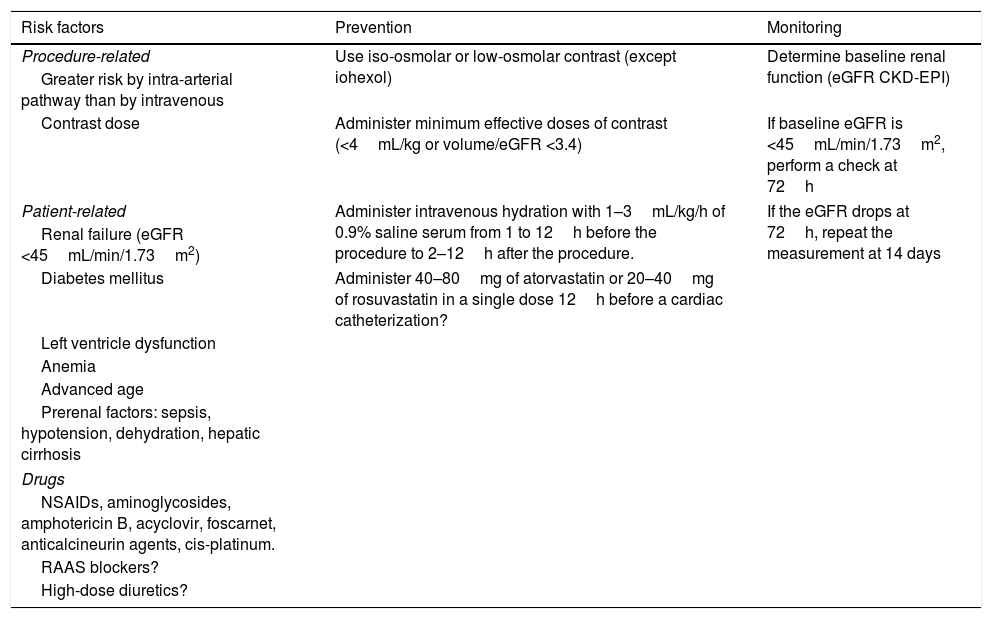The use of iodinated contrast media can cause renal toxicity. Whether contrast media are exclusively responsible for kidney damage is currently the subject of debate, given that in most cases, other potential causes of the renal failure are present. With current low-osmolar and iso-osmolar contrast media, the incidence rate of contrast-induced nephropathy is estimated to be <1% in the low-risk population but can increase to 37% in patients who are administered contrast by an intra-arterial administration and/or who have renal failure with an estimated glomerular filtration rate (eGFR) <30mL/min/1.73m2. To minimize the risk of renal toxicity, the recommendation is to administer the least amount of contrast possible and ensure appropriate volume expansion by infusing 0.9% saline solution.
El uso de contrastes iodados puede causar nefrotoxicidad. Actualmente se cuestiona que los contrastes sean los responsables exclusivos del daño renal, ya que en la mayoría de los casos coexisten otras causas potenciales de fracaso renal. Con los contrastes actuales de baja osmolaridad e isoosmolares, la incidencia de nefropatía por contraste se estima que es inferior al 1% en la población de bajo riesgo; pero puede incrementarse hasta el 37% en pacientes que reciben contraste por vía intraarterial y/o que presentan insuficiencia renal con filtrado glomerular estimado inferior a 30ml/min/1.73m2. Para minimizar el riesgo de nefrotoxicidad se recomienda administrar la menor cantidad posible de contraste y asegurar una adecuada expansión de volumen mediante la infusión de solución salina 0,9%.
Article
Diríjase desde aquí a la web de la >>>FESEMI<<< e inicie sesión mediante el formulario que se encuentra en la barra superior, pulsando sobre el candado.

Una vez autentificado, en la misma web de FESEMI, en el menú superior, elija la opción deseada.

>>>FESEMI<<<







